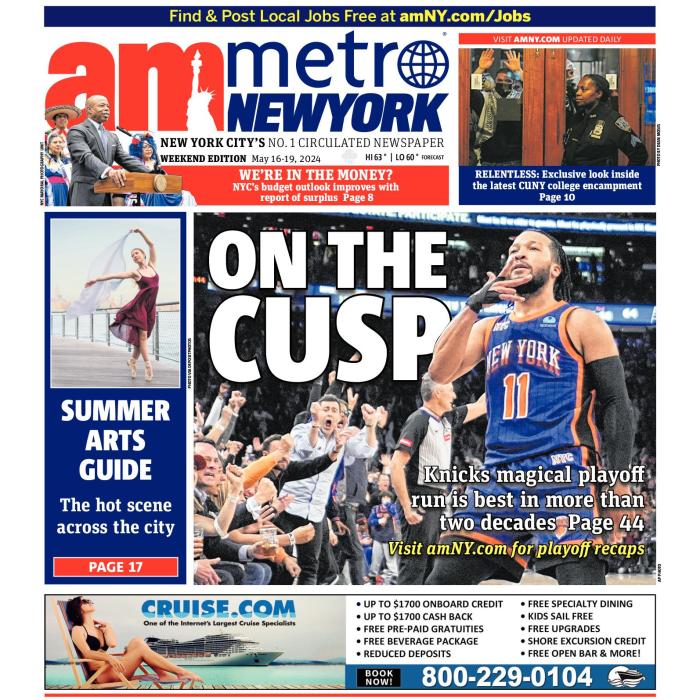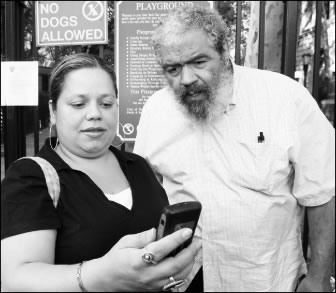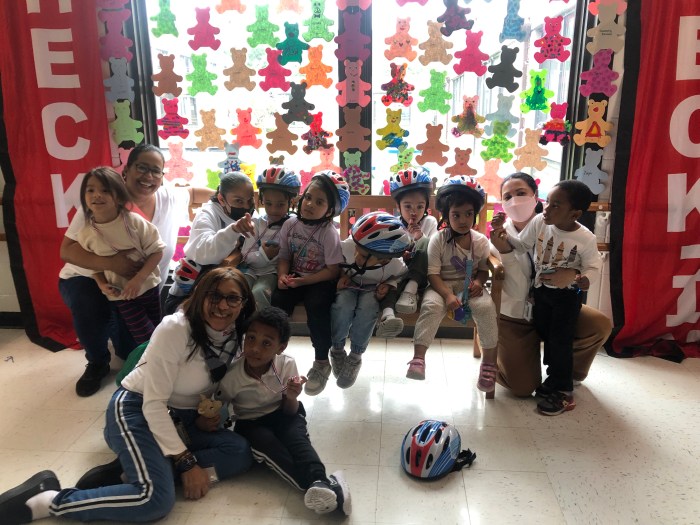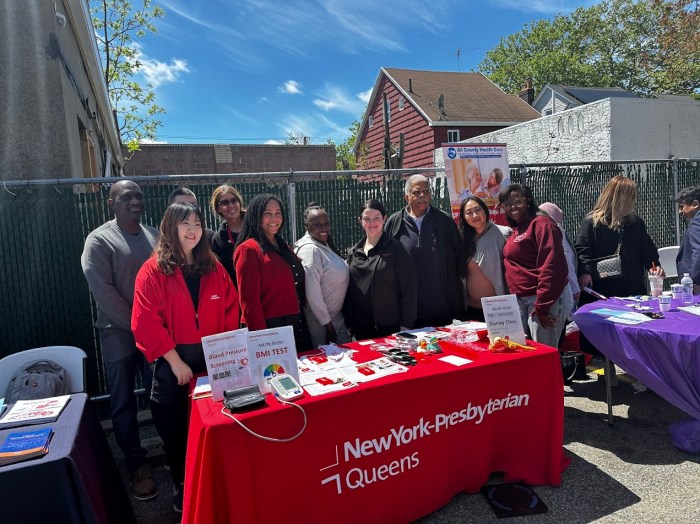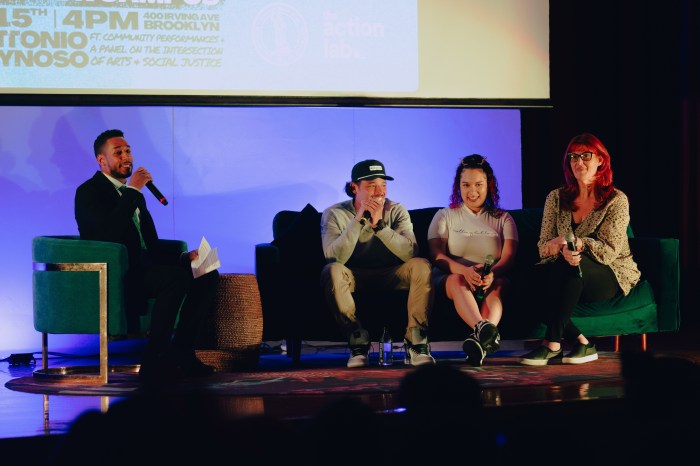By Gerard Flynn
In 1967, under a federal “slum-clearance” program, tenements housing 7,000 residents on a large swath of several blocks south of the Williamsburg Bridge approach were razed. As part of the Seward Park Urban Renewal Area plan, low-income housing was promised to be built in return. But more than 30 years later, much of the area still lies vacant, occupied by a vast, open-air parking lot.
Also left in the wake of those demolitions are lingering community divisions over what to do with the largest piece of undeveloped property owned by the city south of 96th St. Over the years, these divisions have sporadically exploded in bitter shouting matches at Community Board 3 between housing advocates and neighbors who argue the area already has enough low-income units.
But local historian Marci Reaven, managing director of the New York City heritage group City Lore, and Damaris Reyes, executive director of affordable housing advocates Good Old Lower East Side (GOLES), will tell anyone who will listen that there is much more to this site than its tortured history and potentially litigious future. Rather, the Seward Park Urban Renewal Area — known as SPURA, for short — they will explain, is part of a culturally diverse and historically rich neighborhood.
Instead, if one is willing to take a short tour through the neighborhood, he or she will find that it is steeped in history.
To stimulate this sort of interest, on Sat., Oct. 11, outside the Seward Park New York Public Library branch, Reaven and Reyes launched SPURA Matters. A six-month-long series of public events, assisted by the Pratt Center for Community Development, the initiative is intended to foster positive public participation on the issue of the undeveloped site and a greater understanding by exploring the area’s multilayered past.
Called “Kicking Over the Traces,” the tour — which uses text messaging to teach local history — was designed by Sarah Williams, a professor of geospatial analysis and remote sensing at Columbia University’s Graduate School of Architecture, Planning and Preservation. The idea came to Williams following a talk Reyes and Reaven gave on SPURA at the New Museum on the Bowery early this year.
“Its interesting, it’s interactive and it’s something new,” Reyes said while standing next to a sticker as she keyed a four-digit code specific to a historical place into her cell phone, then waited to hear back from the computer server in Williams’s office.
There are 20 red stickers pasted around the SPURA site on poles, at subway entrances and on telephone booths, among other locations in the area between Delancey, Henry and Allen Sts.
Faster than you can say “Seward Park Urban Renewal Plan,” the interactive history teacher texted back that Reyes was standing outside the “1st city-built playground in U.S. Opened in 1903,” which was “Named 4 NY Sen. WIlliam Henry Seward, who set up purchase of Alaska from Russia — denounced.” A bite-sized morsel of information, it was intended to whet one’s appetite to learn about the community’s historic character, slowly disappearing in the face of encroaching real estate development.
“Not everyone will respond to a public discussion,” Reyes said. “It seems academic, sometimes. So there are all these different ways we are trying to engage people around this issue — the interactive tour, the public discussion, the visioning” of what will go on the empty sites.
Seward Park, Reaven explained, as they strolled through the tour, has since the turn of the 20th century undergone tremendous changes and then, as now, visions of what constitutes urban renewal have long been hotly debated.
“It’s a very complicated story,” she explained. “There were different viewpoints about how well urban renewal was working, about who it was working for. It was really intended from the beginning to be a way of shifting the class structure of the city, to bring more revenue.”
And although it did serve to bring income to the inner city, “what was never figured out really well was what would you do with the people,” Reaven said. “So, those people who lived here, who tend to get called the ‘site tenants,’ were moved out all over the city by the hundreds of thousands.”
While many of the stickers may peel or be picked away, Williams and Jenifer Kaminsky, an urban planner with the Urban Homesteading Assistance Board, will be available to replace them as needed.
The technology, Williams explained, allows the community to learn not just about the site and its history, but also to reply with comments of their own.
“Instead of just reading a plaque, you have this interactive experience,” the professor said. “So it creates a multilatered experience rather than a static one.”
The interactive project is expected to last up to half a year and coincides with a series of discussions on the issue of SPURA’s future, inviting policy makers, historians and activists to explore the site’s complex history, as well as entertaining possible visions for its future.
There will be discussion and visioning sessions, free and open to the public Sat., Nov. 1, 2 p.m. to 4:30 p.m., at St. Mary’s Church, Bingo Hall, 440 Grand St.; Wed., Nov. 12, 6:30 p.m. to 9 p.m., Grand Street Settlement, 80 Pitt St.; and Sat., Nov. 22, 2 p.m. to 4:30 p.m., 227 E. Third St., ground floor. Spanish and Chinese speakers will be accommodated. Space is limited. RSVP at register@goles.org or by calling 212-533-2541. A culminating report on the sessions will be delivered directly to elected officials.
In addition, on Wed., Dec. 17, at 6:30 p.m., at The New School, 55 Fifth Ave., auditorium, there will be a roundtable discussion with policymakers,
historians and activists at the opening of “Visualizing SPURA.” A new exhibition by students of the Eugene Lang/New School City Studio and Professor Gabrielle Bendiner-Viani, “Visualizing SPURA” will use ethnographic, visual, historical, mapping and participatory methods to represent the multilayered histories of this complex site.
All discussions are free. To take the tour, and to learn more about additional events, go to www.kickingoverthetraces.com.
